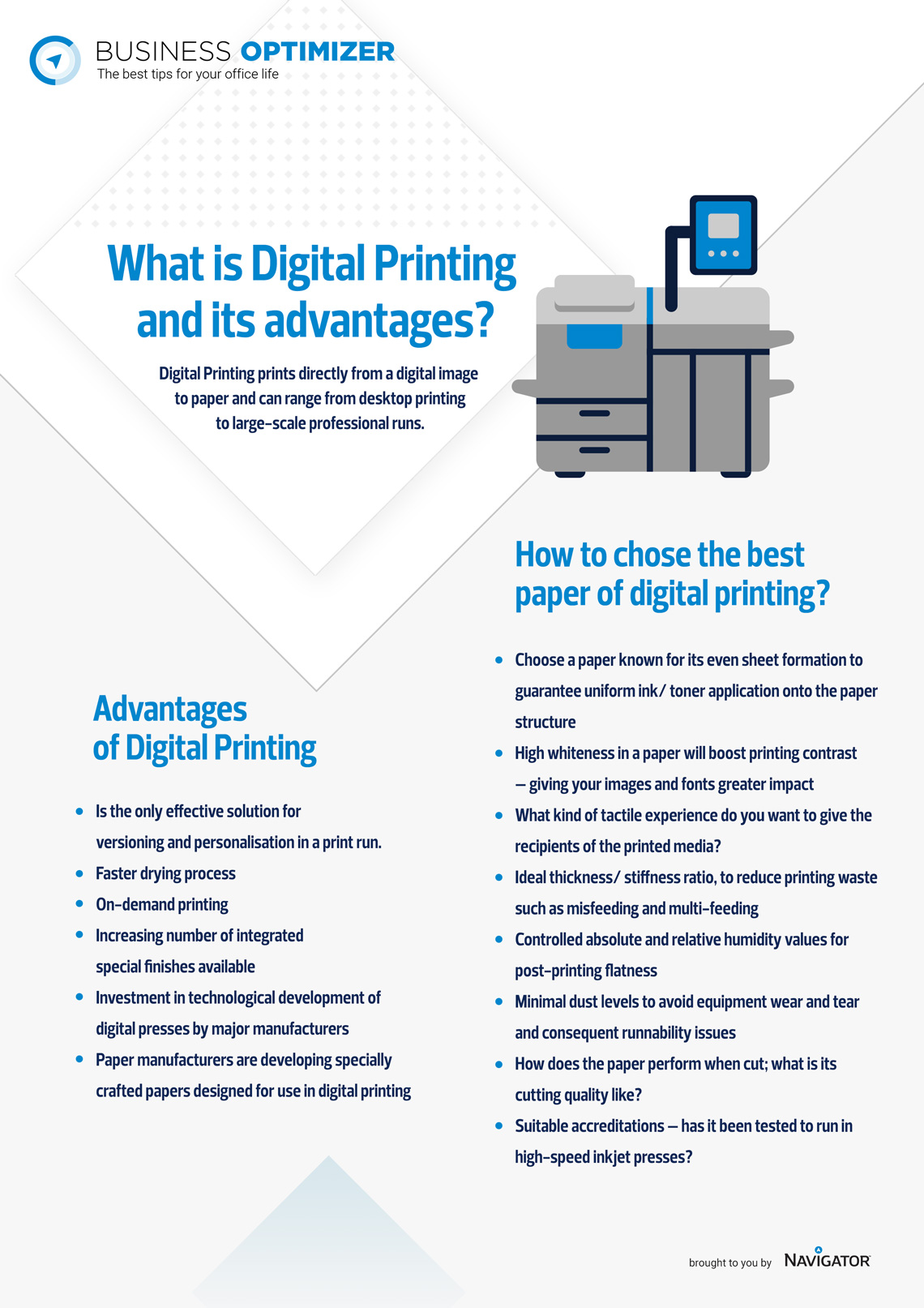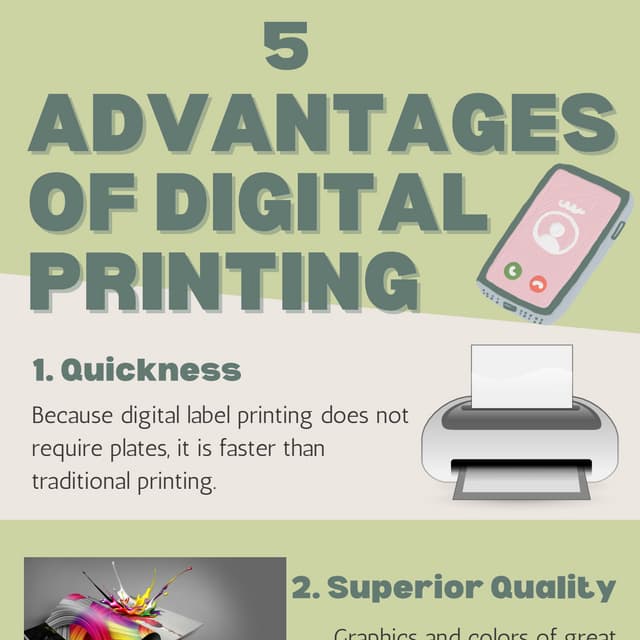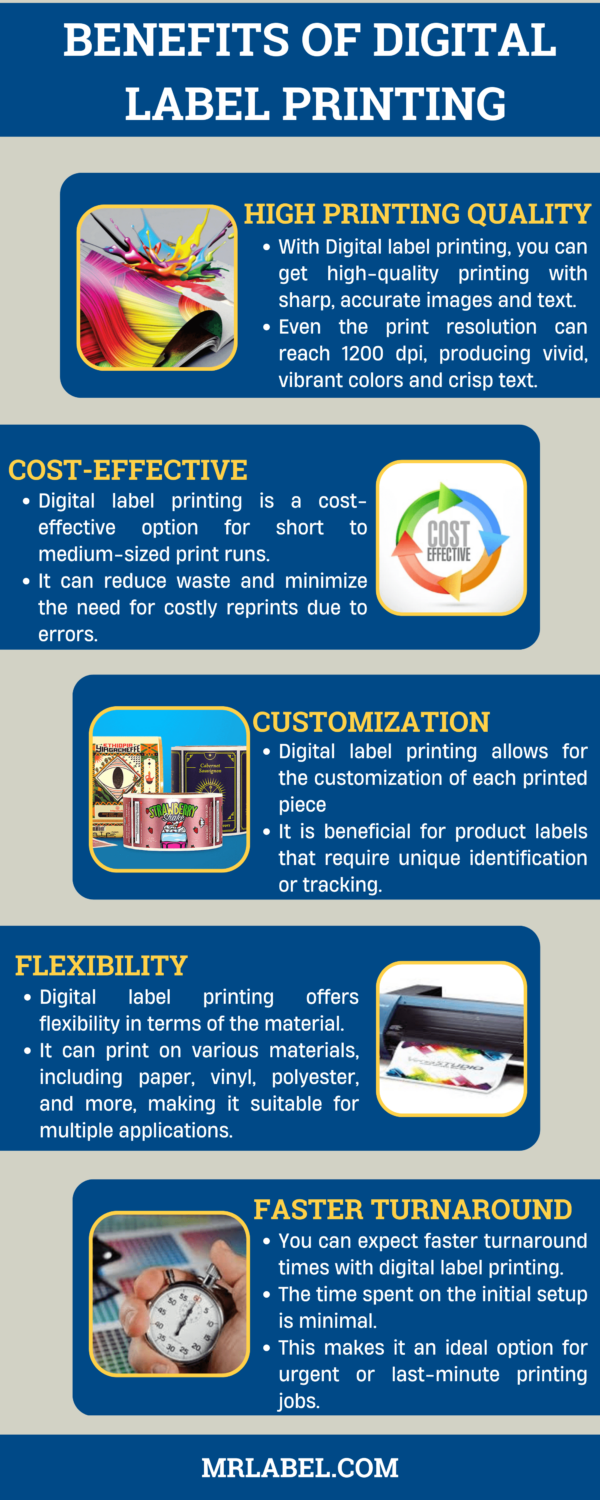Some Known Questions About Digital Printing.
Some Known Questions About Digital Printing.
Blog Article
The 25-Second Trick For Digital Printing
Table of ContentsNot known Details About Digital Printing The Single Strategy To Use For Digital PrintingDigital Printing Can Be Fun For Everyone3 Simple Techniques For Digital PrintingMore About Digital PrintingThe 7-Second Trick For Digital Printing
Variable information printing, such as straight mail with individualized codes and addresses, is preferably suited for digital printing. Digital quick printing only needs 4 steps of design, review, printing and binding to obtain every little thing done. Digital quick printing has an unequaled advantage: print on demand.According to PMMI, electronic printing permits brand names and producers to respond promptly to consumer needs while enhancing the supply chain, lowering warehousing price and waste, and enjoying faster time to market. That all noises great, yet exactly how does this modern technology do all that? The significant differentiator of these modern technologies is that there are no set-up costs and no plates with digital printing.
The Digital Printing Statements
This results in quicker turnaround time and lowers cost when using electronic printing.
Digital printing is highly flexible, so it's simple to make modifications to the bundle layout promptly. It all goes back to the plates.
With conventional printing techniques, short-run printing is just not possible. Due to the fact that a wonderful layout can make or damage your item, electronic printing constantly creates top quality, clear and colorful graphics each time.
Digital printing is the process of printing digital-based images directly onto a range of media substrates. There is no need for a printing plate, unlike with balanced out printing. Digital files such as PDFs or desktop publishing documents can be sent out straight to the electronic printing machine to print theoretically, photo paper, canvas, fabric, synthetics, cardstock and other substrates.
What Does Digital Printing Do?
According to PMMI, electronic printing enables brands and manufacturers to react promptly to customer demands while enhancing the supply chain, decreasing warehousing price and waste, and appreciating faster time to market. That all audios terrific, but just how does this modern technology do all that? The significant differentiator of these technologies is that there are no set up costs and no click plates with electronic printing.
According to Wikipedia, the greatest difference in between electronic printing and standard methods such as lithography, flexography, gravure, or letterpress is that there is no demand to replace printing plates in digital printing, whereas in these analog printing methods home plates are consistently replaced. This causes quicker turn-around time and lowers price when using digital printing.

Indicators on Digital Printing You Need To Know
With conventional printing techniques, short-run printing is simply not feasible. Because an excellent design can make or break your item, my response electronic printing consistently produces top quality, clear and vibrant graphics each time.

According to PMMI, electronic printing enables brand names and producers to react quickly to client needs while enhancing the supply chain, reducing warehousing price and waste, and taking pleasure in faster time to market. That all sounds wonderful, but exactly how does this modern technology do all that? The major differentiator of these technologies is that there are no set up charges and no plates with electronic printing.
Our Digital Printing PDFs
According to Wikipedia, the biggest distinction between digital printing and traditional methods such as lithography, flexography, gravure, or letterpress is that there is no demand to change printing plates in digital printing, whereas in these analog printing approaches the plates are continuously changed. Check This Out This results in quicker turn-around time and lowers expense when utilizing digital printing.
Digital printing is extremely flexible, so it's very easy to make modifications to the bundle design quickly. It all goes back to the plates.

The Best Guide To Digital Printing
Digital printing is the procedure of printing digital-based pictures directly onto a variety of media substrates. There is no need for a printing plate, unlike with offset printing. Digital data such as PDFs or desktop publishing documents can be sent straight to the digital printing machine to print on paper, photo paper, canvas, material, synthetics, cardstock and various other substrates.
Report this page